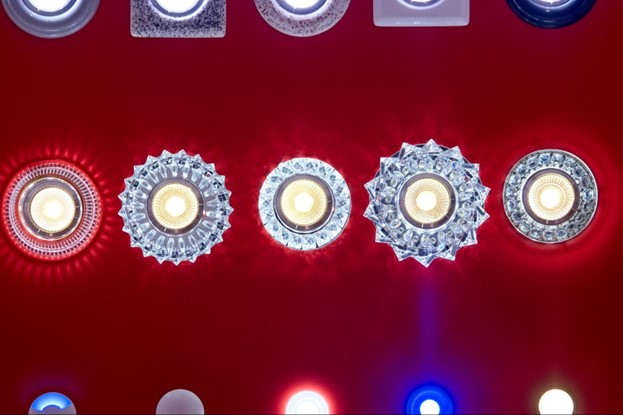The benefits of using LED lights in your home or business

In both homes and businesses, lighting plays a crucial role in setting the right ambiance, ensuring safety, and creating functional spaces. However, as the world becomes more conscious of energy consumption and environmental sustainability, the demand for more efficient lighting solutions has grown significantly. Traditional lighting systems are gradually being replaced by newer, more efficient technologies. Among these, LED lighting stands out as the most effective and popular option.
The benefits of using LED lights go beyond just energy savings; they offer long life spans, superior performance, and flexibility in various lighting applications. Whether you’re looking to reduce energy costs or minimize your carbon footprint, LED lights provide a practical, eco-friendly solution for both residential and commercial spaces.
The energy efficiency of LED lights
One of the most notable advantages of LED lights is their remarkable energy efficiency. LED lights use considerably less electrical energy compared to incandescent lights or fluorescent lamps. While incandescent lighting loses much of its energy in the form of heat, LED bulbs are designed to convert almost all the energy they use into visible light, making them highly efficient. This efficient use of energy means that homes and businesses using LED bulbs can significantly lower their overall energy consumption, leading to considerable energy savings.
Moreover, the energy-efficient nature of LED lighting helps reduce energy costs, especially for businesses where lighting needs are constant. Facility managers are increasingly choosing LED technology because of its ability to reduce operating expenses while maintaining high performance. Not only do LED lights help lower monthly electricity bills, but their eco-friendly design also reduces the overall carbon footprint of buildings. As a result, LED lighting is becoming the go-to choice for anyone looking to create a more energy-efficient and sustainable environment.
Longevity and durability of LED bulbs
Another major advantage of LED lights is their impressive life span, which far exceeds that of traditional incandescent lighting or fluorescent lights. Whereas incandescent bulbs often burn out after just 1,000 hours of use, LED bulbs can last for up to 50,000 hours or more, depending on the product. This means that switching to LED lighting can drastically reduce the frequency of bulb replacements, saving both money and time eventually. The long-lasting nature of LED products makes them especially attractive for businesses and facilities that require continuous lighting, such as offices, retail spaces, and warehouses.
In addition to their long life, LED bulbs are highly durable and can withstand frequent switching without diminishing their performance. Unlike traditional bulbs that frequently dim or burn out with repeated use, LEDs maintain their full brightness for the entirety of their lifespan. This makes them a superior choice for environments where lights are frequently turned on and off, such as restrooms, kitchens, or outdoor spaces. Moreover, the resilience of LED lights in harsh conditions, such as low temperatures or areas with high humidity, further enhances their value in commercial and industrial applications. Ultimately, the long life spans and durability of LED lights contribute to substantial cost savings and reduced maintenance efforts.
Versatility and applications of LED lighting
One of the most appealing aspects of LED lighting is its versatility across a wide range of applications. LED lights can be tailored to suit different needs, offering precise illumination through their specific direction capabilities, unlike traditional lighting options that scatter light inefficiently. This makes LED lights ideal for task lighting, where focused brightness is required, such as in kitchens, workshops, or office desks.
Beyond task lighting, LEDs are also perfect for ambient lighting and decorative light displays, commonly seen in homes, retail spaces, and outdoor environments. From cosy, warm tones in living rooms to vibrant, colour-changing flashing light displays at commercial venues, LED lighting provides flexibility in creating the perfect mood. LED bulbs are also widely used in commercial settings, particularly in refrigerated display cases and cold storage, as they perform impressively in low temperatures, unlike fluorescent lights that tend to flicker or dim in cold environments.
Moreover, LED lighting excels in environments requiring frequent switching, such as stairwells, hallways, or sensor-activated lights. Unlike incandescent bulbs, which suffer from reduced lifespan with frequent on-off cycling, LEDs are built to handle these conditions without compromise. Their ability to be dimmed without losing quality makes them ideal for customizable lighting setups, where lighting intensity may need to be adjusted throughout the day. This versatility allows LED lights to adapt to various needs, whether in homes, offices, warehouses, or outdoor settings, proving their superiority over traditional lighting options.
Environmental and health benefits of LED lights
The benefits of using LED lights extend beyond energy efficiency and long lifespan; they also contribute positively to environmental sustainability and personal health. Unlike fluorescent lamps, which contain mercury and pose a risk of mercury exposure, LED bulbs are free of hazardous chemicals, making them a safer option for the environment and individuals. Additionally, LED lights produce minimal UV emissions, reducing the potential for UV-related damage to artwork, fabrics, and other sensitive materials in homes and businesses.
From an environmental perspective, LED lighting plays a vital role in conserving resources and reducing waste. The long-lasting nature of LED products means fewer bulbs are thrown away, contributing to less landfill waste. Additionally, because LEDs use far less energy, their widespread adoption reduces the demand for energy production, which in turn lowers greenhouse gas emissions and decreases the carbon footprint of households and businesses alike.
Another important factor is the amount of heat emitted by different lighting sources. Incandescent bulbs and fluorescent lights generate a significant amount of heat, which can increase room temperatures and lead to higher cooling costs, particularly in warm climates. In contrast, LED lights emit very little heat, reducing the strain on air conditioning systems and making them safer to handle. This lower heat output also makes LEDs ideal for use in hot areas where high temperatures could affect lighting performance or safety.
Cost savings with LED technology
One of the primary reasons for the increased adoption of LED lights is the potential for significant cost savings over time. While LED bulbs may have a higher upfront cost compared to incandescent bulbs or fluorescent lamps, their long-term value becomes apparent in their durability and energy savings. Because LED bulbs last much longer and use less energy, homes/businesses can save on replacement costs and electricity bills. In commercial spaces, these savings can be substantial, especially in facilities that operate lighting systems continuously, such as hospitals, schools, and retail stores.
Moreover, LED technology operates on low voltage, making it more efficient in terms of energy consumption compared to lighting systems that require higher voltage. This reduces electricity usage and minimizes the strain on electrical infrastructure, reducing the risk of power outages and the need for frequent electrical maintenance.
For businesses, the switch to LED lighting also offers operational benefits, as fewer replacements and reduced energy consumption lead to lower overall operating expenses. Facility managers can rely on LED bulbs to maintain performance while cutting down on labour and material costs associated with frequent bulb changes. Over time, the savings in energy and maintenance make LED lighting a smart investment for any business looking to optimize its operational efficiency.
Lighting performance and design flexibility
In addition to energy savings and durability, LED lighting offers superior lighting performance and flexibility in design. One of the key features of LED lights is their ability to deliver customizable brightness and colour temperature options. Homeowners and businesses can choose between soft, warm tones for living spaces or warm white lighting for a more cosy, intimate atmosphere. On the other hand, cooler, brighter light options are available for workspaces and areas where productivity and visibility are essential.
Another performance advantage is that LED bulbs reach their full brightness instantly, unlike incandescent bulbs or fluorescent lights, which often require a warm-up period. This instant-on capability is crucial for environments where quick, reliable lighting is needed, such as in emergency exits, hallways, or outdoor lighting.
For those interested in design, LED lighting provides endless possibilities for creativity. Whether used for accent lighting, under-cabinet lights, or elaborate architectural light displays, LEDs offer versatility that traditional incandescent bulbs cannot match. The ability to create dynamic lighting effects, including dimming options, colour shifts, and directional lighting, makes LEDs a top choice for both residential and commercial design projects.
Conclusion
The benefits of using LED lights in homes and businesses are numerous and compelling. From their energy efficiency and long-lasting durability to their versatility in various applications, LED lights represent a superior alternative to traditional incandescent and fluorescent lighting options. Not only do they offer substantial energy savings and reduced energy costs, but they also contribute to a cleaner, more sustainable environment. Whether you’re upgrading your home’s lighting or optimizing the lighting system of a business facility, LED technology provides an eco-friendly, cost-effective solution that enhances lighting performance while reducing your carbon footprint. Embrace the future of lighting and make the switch to LEDs today for a brighter, more efficient tomorrow.



